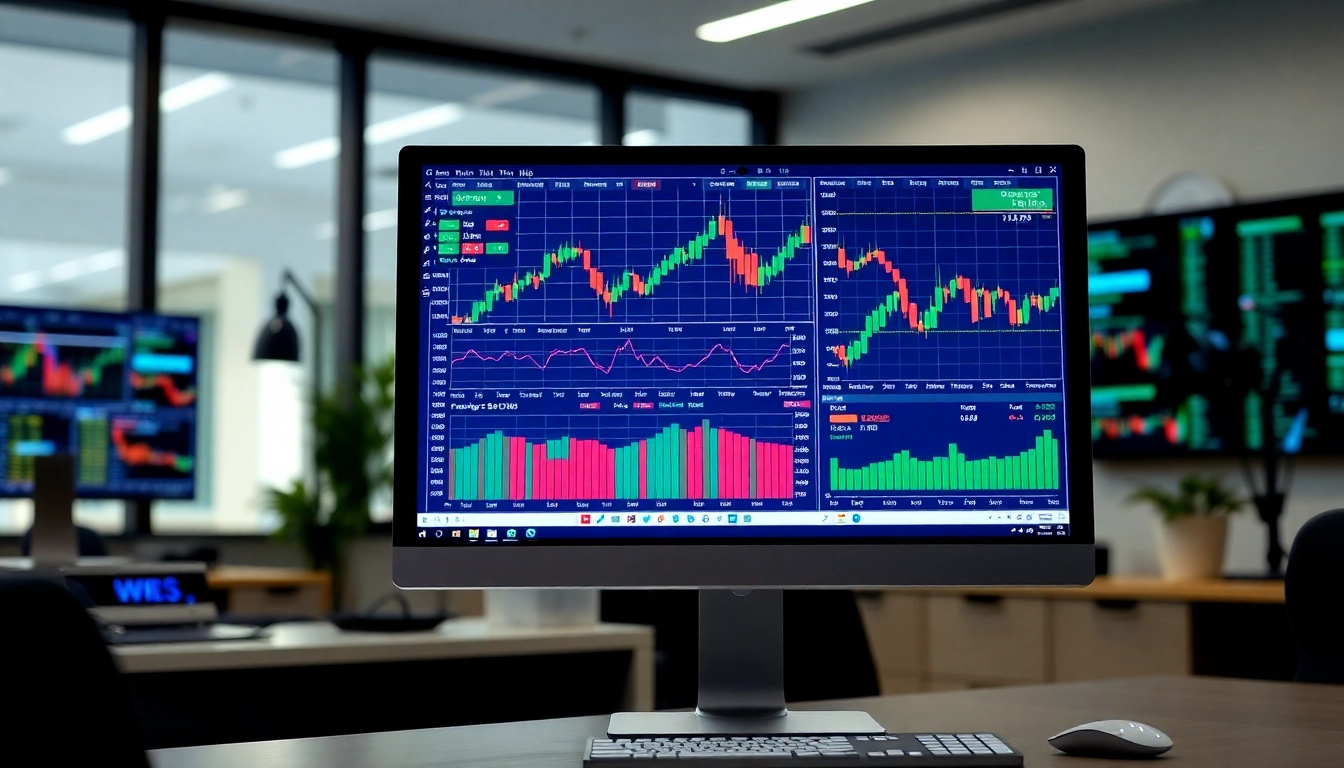Mastering Online Stock Trading: Strategies for Consistent Investment Success

In today’s rapidly evolving financial landscape, online stock trading has become an accessible and popular method for individual investors to participate in global markets. Whether you’re looking to build wealth over the long term or capitalize on short-term market movements, understanding the fundamentals of online trading is essential. Unlike traditional methods that required intermediaries or broker-assisted transactions, online stock trading empowers investors with direct access to market data, execution tools, and analytical resources, all at their fingertips. Engaging in online stock trading involves buying and selling shares via digital platforms that connect traders directly to stock exchanges. This method offers unprecedented convenience, transparency, and speed, enabling traders to react quickly to market developments. To delve further into how this process works, it’s helpful to understand the core mechanics of online trading and how traders leverage technology to optimize their investment strategies. If you’re interested in exploring this approach further, you can visit our dedicated page on Online Stock Trading for detailed guides and resources. The foundation of effective online trading lies in choosing a reliable and feature-rich trading platform. Factors to consider include user interface intuitiveness, speed of order execution, security protocols, and access to research tools. Top platforms, such as TD Ameritrade, E*TRADE, or Interactive Brokers, offer customizable dashboards, real-time alerts, and seamless integration with analytical software. Carefully assessing your trading goals and technical skills can help you pick a platform that aligns with your strategy. Real-time data analysis is crucial for timely decision-making. Modern trading platforms provide live quotes, depth-of-market information, and advanced charting tools. These features allow traders to monitor price movements, identify entry and exit points, and recognize trends. Incorporating technical indicators—such as moving averages, RSI, and MACD—can enhance analysis. Additionally, some platforms incorporate news feeds that deliver instant updates on economic events, earnings reports, and geopolitical developments that impact stocks. Before risking real capital, novice traders should leverage demo accounts and simulation tools offered by most platforms. These tools provide virtual funds to execute trades and test strategies in a risk-free environment. They help users familiarize themselves with platform functionalities, refine their trading approach, and build confidence. Effective use of simulators can accelerate learning curves and reduce emotional reactions that often impair real trading performance. Technical analysis involves examining historical price data to forecast future movements. Traders study chart patterns such as head and shoulders, double tops/bottoms, and flags to identify potential reversals or continuations. Utilizing trendlines, volume analysis, and oscillators enhances predictive accuracy. For example, a breakout from a well-defined resistance level accompanied by increased volume can signal a strong buying opportunity. Mastery of technical analysis enables traders to time entries and exits more effectively. Fundamental analysis evaluates a company’s intrinsic value based on financial reports, earnings, revenue growth, industry position, and macroeconomic factors. Key indicators like Price-to-Earnings (P/E) ratio, Return on Equity (ROE), and debt levels help traders assess whether a stock is undervalued or overvalued. Integrating fundamental insights with technical signals creates a comprehensive approach, especially for long-term investments focused on the company’s growth potential. Proper risk management is vital to avoid significant losses. Setting stop-loss and take-profit orders ensures disciplined exits, while position sizing limits exposure to individual stocks. Diversification across sectors and asset classes helps balance risks and reduces the impact of adverse movements in any single investment. Adopting a systematic approach—such as the Kelly criterion or fixed fractional strategies—further fortifies your trading plan against market volatility. Maintaining detailed records of all trades allows traders to evaluate their strengths and weaknesses. Analyzing metrics like win/loss ratio, average profit and loss, and trade duration provides valuable feedback. Many platforms offer built-in audit trails and reporting tools to facilitate this process. Continuous review helps identify consistency issues, emotional biases, or faulty strategies, enabling continual improvement. Markets are inherently dynamic; thus, adaptability is essential. Successful traders monitor macroeconomic trends, sector rotations, and technological innovations. When market conditions shift—such as during increased volatility or changing interest rates—adjusting your strategy, scaling positions, or tightening risk parameters is prudent. Flexibility and ongoing learning distinguish sustainable traders from those who fail to adapt. Timely access to market news and economic reports can significantly influence trading decisions. Reliable sources include financial news outlets, earnings press releases, Federal Reserve statements, and geopolitical updates. Many traders use economic calendars to track upcoming events that could impact markets, like GDP releases or employment reports. Staying informed ensures that your trading decisions are based on comprehensive, current data, reducing surprises and improving performance.Introduction to Online Stock Trading: Understanding the Basics
Essential Tools and Platforms for Successful Stock Trading
Selecting the Right Trading Platform
Analyze Market Data and Real-Time Quotes
Utilizing Trading Simulations and Demo Accounts
Developing an Effective Online Stock Trading Strategy
Technical Analysis and Chart Patterns
Fundamental Analysis and Company Metrics
Risk Management and Diversification Techniques
Measuring Performance and Improving Results in Online Trading
Tracking Your Trades and Analyzing Outcomes
Adjusting Strategies Based on Market Trends
Staying Informed with Market News and Financial Reports